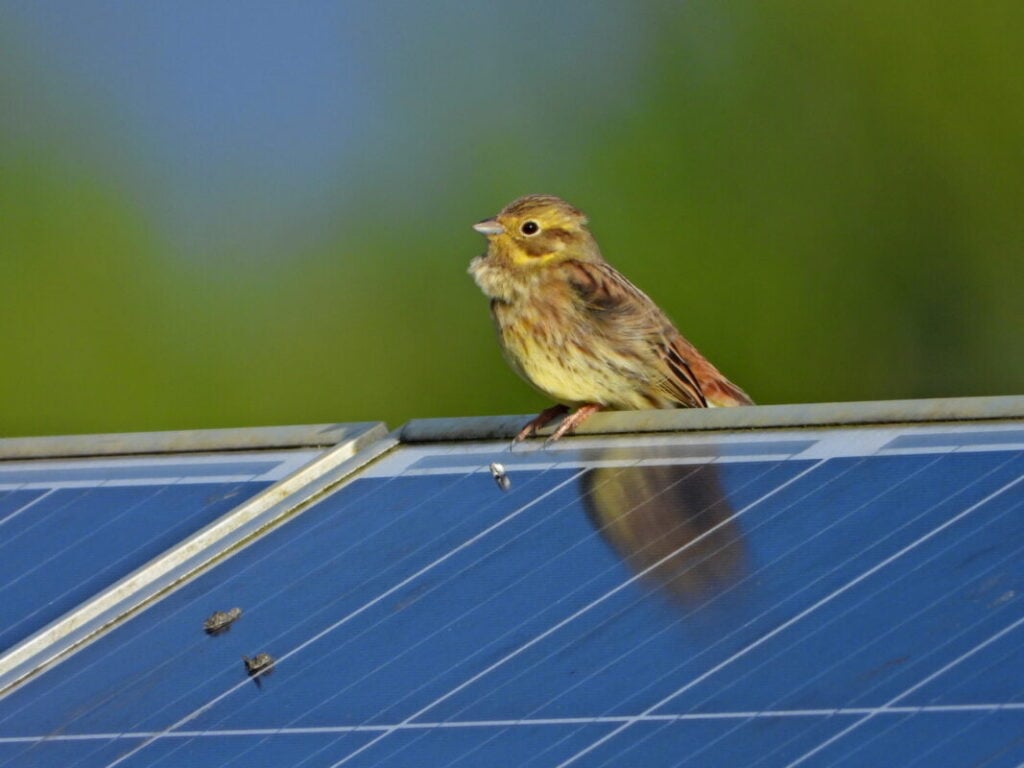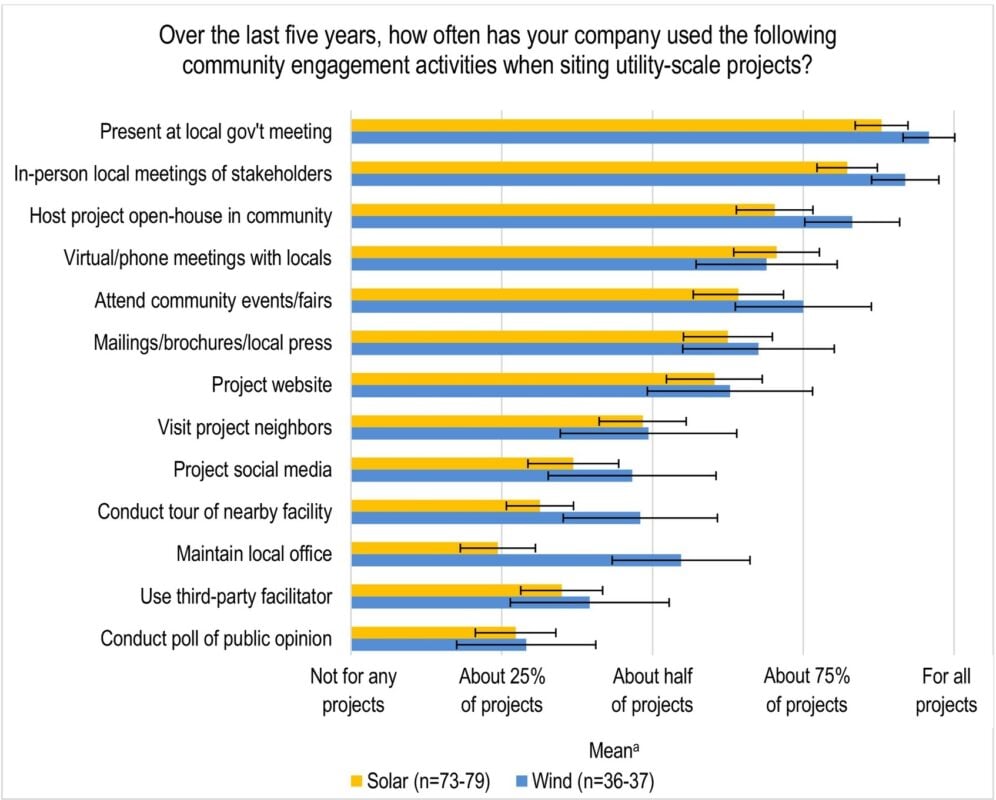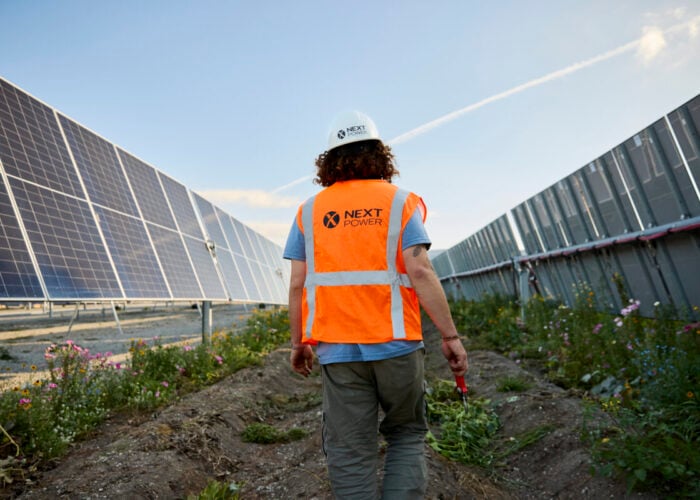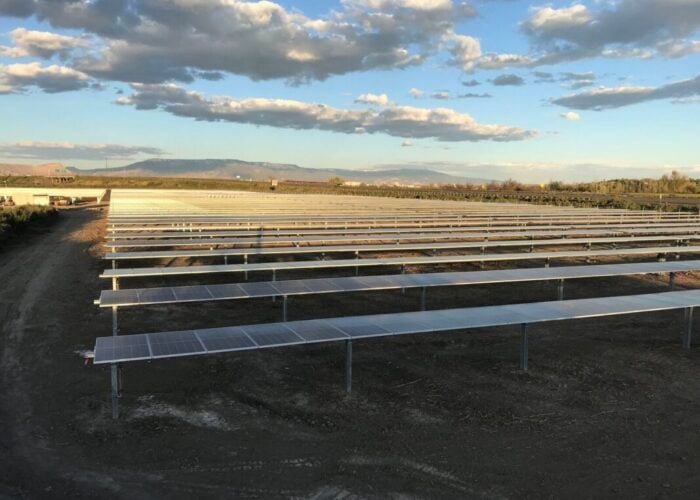
In many regions, growing local opposition has become one of the biggest hurdles facing utility PV developers. In the first of five PV Tech Premium articles this week on opposition to solar projects, Tom Kenning investigates the scale of the issue and the measures developers are employing to win back community support.
Despite broad public support for solar energy, local opposition to large-scale solar farms is on the rise across the UK, Europe and the US. Once seen as a straightforward win for decarbonisation efforts, solar developments are now facing increasing scrutiny, with concerns ranging from landscape aesthetics and agricultural land use to fears about property values and environmental impact.
Try Premium for just $1
- Full premium access for the first month at only $1
- Converts to an annual rate after 30 days unless cancelled
- Cancel anytime during the trial period
Premium Benefits
- Expert industry analysis and interviews
- Digital access to PV Tech Power journal
- Exclusive event discounts
Or get the full Premium subscription right away
Or continue reading this article for free
Media headlines decrying the loss of farmland and the perceived intrusion of vast solar arrays into rural communities have become a near-daily occurrence in the UK, for example, reflecting growing tensions between national clean energy goals and local sentiment. Meanwhile, developers worry that better-organised opposition and misinformation could slow the rollout of much-needed solar capacity and drive up project costs.
By 2035, for instance, according to trade body Solar Energy UK, solar farms could cover up to 0.3% of the UK’s total land area, a fraction of available space but enough to spark heated debates about land use. With many more large-scale projects in the pipeline, the need for effective community engagement has never been more urgent.
Developers may no longer be able to rely on the widespread “Decide-Announce-Defend” (DAD) approach, where they wait until site control is established before engaging local stakeholders. Instead, communicating with the public as early as possible in the development process is now a constant refrain in PV developer advice on how to mitigate community pushback.
The industry must also proactively shape the narrative at large, strengthen national solar associations and employ best-practice playbooks to ensure smoother project approvals and long-term community support. Recognising the power of mobilising quieter supporters rather than trying to persuade the staunchest critics may also be a shrewd approach.
But there are no panaceas. At least one PV player in America has rued early community engagement, claiming that it allowed space for opposition and misinformation to grow, followed by the passing of new solar zoning restrictions. Increased public involvement can also temporarily slow down deployment rates and induce various changes to project designs.
European infowars
“As solar grows, so will the scrutiny,” says a spokesperson for the European PV association SolarPower Europe (SPE). While PV enjoys broad support across the continent, resistance is mounting, particularly in the UK, Spain, Greece and parts of Germany, where large-scale projects are expanding rapidly. However, opposition tends to be highly localised and specific to individual projects.
In Spain, public perception of PV remains largely positive, since many established projects have delivered lasting benefits to local communities. However, conservation groups are concerned about large solar projects interfering with bird migration routes and isolated cases of opposition still arise.
“There is no specific reason; they need to be analysed individually since, on many occasions, they involve competitive economic interests,” explains Laura Villaverde, society director at UNEF, the Spanish solar PV association. “The biggest problem we encounter, which is indeed present in all cases of pushback, is misinformation and the spread of fake news.”
Indeed, there is a widespread conviction among solar proponents that misinformation is affecting public discourse. The SPE spokesperson explains how this misinformation varies from exaggerated claims about permanently increased traffic and health risks to outright conspiracy theories questioning whether solar plants can generate energy at all.
On the other hand, a recent study in the US by Lawrence Berkeley National Laboratory (Berkeley Lab) suggests that the solar industry relies too much on blaming misinformation at the expense of acknowledging genuine community concerns.
Indeed, one local opponent to a proposed solar farm in south-west England says genuine concerns are all too easily dismissed as misinformation.
New threat on the block
During a webinar last December for this journal’s publisher, Solar Media, Alex DeSouza, general counsel for EMEA, at Europe’s largest solar developer Lightsource bp, identified inadequate community engagement at the early stages of development as the newest critical threat to PV business models – on a par with traditional challenges like rising interest rates, PPA markets and negative pricing.
“It’s incredibly important, because obviously it’s relationships that we’re going to have with communities throughout the life of the project,” she said.
Furthermore, the growing “professionalisation” of activist and community opposition groups in many markets is having a significant impact. Organised resistance can cause delays in project timelines, making it harder for developers to predict when projects will reach their commercial operation date (COD), and thus push up development costs.
“Most of the trade associations across Europe are encouraging developers to look at this more appropriately,” said DeSouza, adding that with the right policies, proper engagement and well-planned strategies, the whole industry can contribute to managing this challenge more effectively.
Likewise, Sonia Dunlop, CEO of the Global Solar Council, says the industry must focus on improving public perception through stronger national solar associations that can counter negative media messaging. Thus, the council is launching initiatives to support 30 national solar industry associations, particularly in developing nations, to ensure that the benefits of solar energy are effectively communicated.
US data links public engagement with success
In the US, growing opposition to large-scale solar is also now a leading cause of project delays and cancellations. The Berkeley Lab study found that local resistance and restrictive ordinances now rival grid interconnection issues as top barriers to renewable energy expansion.
Surveying 123 professionals from 62 solar developers, the study revealed that over 80% were at least “moderately concerned” that community opposition could derail national decarbonisation goals, with the majority “very concerned”.
In 22% of cancelled projects, most residents were unaware of plans until late in development, compared to just 1% in successful projects. Conversely, 60% of successful projects involved early public input, highlighting the potential benefits of proactive community engagement.

Despite this, many developers still follow the DAD model, waiting until land leases are secured before informing the public.
The study notes: “The selection of land and signing of project leases […] is perceived by the public and other local stakeholders as a critical decision point; after this decision point, these stakeholders often sense that their opinions and input do not matter.”
US developers are generally willing to hear community concerns but prefer limiting public influence over project decisions. Berkeley Lab titled its report “Halfway Up the Ladder” to reflect this disconnect. While developers acknowledge that local engagement reduces project cancellations, the study found they spend less than 0.1% of capital expenditures on community outreach.
Find supporters, not critics: a hidden key to winning local solar approval
The biggest barrier to expanding renewable energy in the US isn’t technology or cost – it’s local permitting. Large-scale solar farms require approval from local governments, but even a handful of vocal opponents can stall or derail progress.
Matt Traldi, founder and CEO of the nonprofit campaign group Greenlight America, argues that solar developers need to change their approach. Instead of trying to persuade critics, they should focus on mobilising local supporters who already believe in the benefits of renewable energy.
The power of showing up
With solar being the cheapest electricity source in history, most Americans support renewable energy for its economic and environmental benefits. Yet, local decision-makers often don’t hear these positives because turnout at permitting meetings is low. This gives organised opponents, who may represent only a small fraction of the community, an outsized influence. Without enough supporters in the room, a few vocal critics can shut down a project.
“Right now, in many parts of the US, opponents are winning and supporters are losing by forfeit – we’re not showing up,” says Traldi. “But supporters can have an outsized opportunity too. Even just a few people speaking up for solar at local meetings can make all the difference.”
Greenlight America acts on this insight by tracking critical local decisions and mobilising supporters at key moments. When important hearings arise, they help local groups activate volunteers to advocate for solar, countering opposition with facts and community-driven backing.
Why engaging supporters works better than persuading critics
Traldi compares this strategy to political organising. In an election, campaigns don’t waste time trying to convert die-hard opposition. “You spend your time on identifying supporters and making sure they get out to the polls,” he says.
The same applies to clean energy. Instead of debating critics, developers should focus on rallying those who already support solar and empowering them to participate.
Convincing dogged opponents is often futile, and prolonged debates only create further conflict and delay projects, suggests Traldi. A better approach is to amplify the voices of local supporters who can communicate the benefits of renewable energy to their neighbours and decision-makers.
Overcoming hesitations among backers
Chris Hewett, CEO of Solar Energy UK (SEUK), notes that in Britain, the loudest voices against solar tend to be a small but highly vocal minority of about 3-4% of residents, who are angry and tend to draw more media coverage.
“It becomes quite an angry campaign, which contributes to the silent majority staying out of it because they don’t want to argue with their neighbours,” says Hewett. “But democratically speaking, it’s a small proportion of people who are opposed.”
This fear of public backlash is one of two main reasons supporters often stay quiet, with the second being uncertainty about the technical details of solar projects. Greenlight America tackles both concerns by:
- Emphasising impact: Many supporters underestimate their influence. They need to know that just a few community members turning up to speak in favour of a solar farm at a council meeting, despite opposition, could, for example, have the same effect as taking hundreds of thousands of cars off the road or planting over a million trees.
- Simplifying complexity: Many US communities have concerns about zoning laws, land use policies, and technical issues such as decommissioning. Greenlight helps break these topics down, enabling supporters to engage confidently without needing an engineering background.
“Technical detail and complexity discourage participation in the public process,” says Traldi. “Simple is good, and part of what Greenlight does is demystify the terminology.” Ultimately,
US clean energy targets depend on decisions made in local government meetings across the country. By shifting the focus from debating critics to mobilising supporters, solar developers in all regions can significantly improve their chances of getting projects approved.
Diplomatic contradictions
Developers have attempted various strategies to win over local communities, with mixed success. Common engagement tactics, as comprehensively listed in the Berkely Lab table, include attending local government meetings and hosting in-person gatherings.
Some developers, as in BrightNight’s Starfire project in Kentucky, have succeeded by prioritising local hiring and economic revitalisation, while choosing a brownfield, former industrial location to avoid agricultural land use concerns.
While many developers believe the public tends to have an “information deficit” around clean energy, the Berkeley Lab study finds many developers underestimate the depth of community concerns. These extend beyond misinformation to identity, land use and way-of-life issues – factors that cannot be addressed through information campaigns alone.
Further reinforcing the perception that local voices are being ignored, the research suggests that some developers consider private dinners with landowners, who often have exclusive access to critical project decisions, to be a form of “community” engagement.
Tellingly, when developers of recently cancelled projects were asked what they would do differently, their most frequent answer was to engage earlier with local governments, neighbours or tribal communities.
UK solar dragged into culture war
New research by SEUK and Copper Consultancy shows growing public support for local solar developments, rising 4% year-on-year to 77% in 2024. However, opposition has also increased from 4% to 13% since 2023. While SEUK acknowledges the need for better communication on the potential biodiversity benefits of solar and how sites are often selected for ease of grid access, it insists that opposition remains a vocal minority.
“In pretty much every case, it’s usually quite a small proportion of the local community who are opposed,” claims Hewett.
SEUK polling suggests that even in areas with proposed solar farms, around 40% of the public supports them, with another 30-40% neutral, while opposition rarely exceeds 10%.
But perceptions may be skewed. Climate Barometer data shows that both the public and members of parliament (MPs) tend to underestimate support for solar and overestimate opposition.
Meanwhile, Hewett says media outlets such as The Telegraph and Daily Mail amplify anti-solar narratives, portraying resistance as greater than it is and dragging PV into wider culture wars. The main legitimate concern is visual impact, though objections about food security and wildlife are often based on misinformation, he claims.
“However much solar you want to put into the UK, it’s not going to impact food security in a major way at all,” Hewett argues.
Ironically, facing financial strain and extreme weather, many farms now rely on co-located solar to stay afloat. A survey found 37% of farmers believe solar revenue could help secure their farms for future generations.
Research from the Royal Society for the Protection of Birds (RSPB) suggests well-managed solar projects can enhance biodiversity, with greater bird populations than farmland. PV projects’ ability to support pollinators and sheep grazing may also benefit local agriculture.
To mitigate opposition, SEUK, which has put together best practice guidelines, urges early, proactive engagement.
“The best developers are the ones who do engage early, who go out of their way to literally talk to the neighbours,” Hewett says.
Kitchen table conversations, adapting designs, offering community benefits, school visits, outdoor educational programmes and maintaining longterm relationships can improve project acceptance.
“Community engagement is not just about talking to the community to engage with the planning process and then everyone goes home,” Hewett emphasises – adding that with the right approach, most UK solar projects do secure local consent and pass planning hurdles.
GSC’s Sonia Dunlop has similar advice: “Projects should always be done with maximum local stakeholder involvement, maximum consultation of local communities, with maximum integration of biodiversity, benefits to agriculture, benefits of local job creation and so on.”
Spain’s UNEF has facilitated such aims through its Seal of Excellence in Sustainability, which certifies projects based on environmental and socioeconomic impact, governance and circular economy. There are 57 certified solar parks already and nearly 20 more in progress across Spain.
Countries such as the US, France and Italy have also embraced agrivoltaics, integrating solar with agriculture, as a compromise to agricultural displacement concerns.
The voice of opposition on a developer’s ‘token gestures’
A resident living near a large proposed solar farm in southwest England says they are concerned about “token gestures” from developers and a lack of genuine community engagement:
“When considering the product life cycle of a solar panel and the impacts of large-scale ground-mounted solar installations, it is clear that they are not as clean and green as they are proposed to be, and developers are dismissing these claims as misinformation in order to pursue an agenda to acquire land as a long-term investment opportunity that does not provide any local benefit. Shutting down rural activity to change land use to energy production, especially for industrial use elsewhere in the country, can never bring about long-term community benefit.
“It would seem that the large-scale rollout of solar energy in the UK has been driven by profit as opposed to a balanced approach involving decision making, including local communities, considerations for food security and the preservation of the rural landscape.
“The locating of smaller sites (49.9MW or less) close to sub-stations inherently leads to a clustering effect, with surrounding residents’ concerns ignored. That, combined with tokenistic gestures, disingenuous acknowledgements of concerns and no measurable benefit to local residents – it’s no surprise that communities are resistant.
“Moreover, given the pace of change within the PV industry in recent years, planning policy and framework is not updating fast enough to provide adequate scrutiny of applications as they come in, with the balance tipped overwhelmingly towards the developer. Until an adequately balanced plan is brought forward, large-scale solar applications should not be allowed.”
Not just system change, it’s mindset change
While large-scale solar developments often face initial resistance, experience shows that opposition tends to diminish over time as projects become part of the landscape, according to research from the UK. Communities living near existing solar farms tend to become more accepting, with concerns about visual impact fading as hedges grow and wildflowers flourish. However, this natural shift in perception takes time, which developers don’t always have when navigating local opposition and planning hurdles.
As the renewable energy transition accelerates, success will depend not just on technological advancements but on fostering a mindset shift within communities. The industry must move beyond one-way information campaigns and embrace meaningful, ongoing engagement that addresses local concerns early and often or risk continued opposition and costly delays. Findings from Berkeley Labs reinforce this, with around 75% of developers agreeing that proactive, transparent dialogue leads to fewer project cancellations.






